
|
A whole lamb makes an inviting presentation and an irresistable aroma for diners at 99 Yurts. No one will be shy about taking home leftovers. Photos by Bruno Maestrini / China Daily |
Year of the Ram? Year of the Sheep? For meat-eaters, the real question is where to find the best of this spring special, says Mike Peters.
Ask Beijing residents about their favorite place to eat lamb, and you'll stir a lively debate.
My colleague Ye Jun, a longtime food writer for China Daily, swears by Xixia Palace at the Beijing Ningxia Hotel. Two French friends, a couple that loves to party, always take out-of-town guests to Afunti, a hopping Xinjiang Uygur joint with good lamb and a floor show on the side: happy-feet music, belly dancers, fire-juggling martial artists and more.
I'm a longtime fan of Crescent Moon, another Xinjiang eatery in a quiet hutong that serves a leg of lamb that wins lots of awards for being savory, lean and tender.
But the winner in my book is 99 Yurts. A half-hour north of Beijing, it's an outpost of the Inner Mongolia autonomous region, where wide-open grasslands and a herding tradition that goes back centuries combine to produce some of the tastiest lamb in the world. Far from big cities and mechanized agriculture, the region has had little use for pesticides and other chemicals - and local farmers have been quick to showcase their lamb, yogurt and vegetables as organic and natural.
|
Grill chets put on a show for dinner guests. |
Besides the succulent lamb, the nomadic tent shelters known as yurts give the restaurant plenty of ethnic flavor. (There is a city-style dining room, but why miss the fun of going native? ) Small parties can share a yurt with others, while groups of 10 or more can have their own. The biggest yurts will surprisingly accommodate about 100 - great for a wedding or company party.
Make a reservation and you'll be assigned a yurt number, easy to find once you arrive at the fairground-like site. Before settling into your own tent, you can stroll around the color canvas shelters and also peer into the open kitchen.
Behind a wall of glass, Mongolian chefs are preparing racks of lamb ribs, succulent kebabs, boiled goat and - the restaurant's piece de resistance: roasted whole lambs over great banks of charcoal, dozens and dozens of them.
In the past, we've found that half a lamb, served with lots of side dishes, can feed about a dozen people.
On a recent visit, however, we went all the way, ordering the whole carcass with vision of leftovers dancing in our heads.
The carnival atmosphere created by the colorfully decorated yurts is enhanced by the serving staff, dressed in luminous embroidered costumes and gracefully toting jugs of yak butter tea, trays of pomegranate juice or wooden planks loaded with juicy morsels of lamb.
The tent adds to the drama, as the flaps open to admit bearers of each dish, one by one, that soon cover our round table. We start with the milk tea, which may be an acquired taste for first-timers. It's mild and rich, and our server promises us it will aid digestion.
He's quite worried about our digestion - clearly thinking the foreigners at the table don't know much about proper eating with our demands for carbonated sodas and beer. In the end, we persuade him to bring both the recommended pomegranate juice - delicious! - and a few beverages and beers.
We start our meal with an appetizer platter of dairy products: goat cheese in several forms and a tart yogurt laced with Xinjiang raisins. Some of us drizzle honey into the mix, but others savor the rich, creamy tartness reminiscent of Middle Eastern yogurt.
And we order an armada of side dishes to go with the pre-ordered lamb: a pan of fried mushrooms, a bowl of a mild green vegetable from the Gobi sands known as "desert onions", some pickled cabbage with chili, garlic, carrots and Chinese chives (jiu cai), and a traditional Mongolian soup of pickled cabbage and glass noodles. Most dishes are savory and not too spicy; there condiments on the side for those seeking more zest. A basket of breads in different sizes and shapes comes with garlic, date paste and other goodies that we eagerly spread on top.
Then comes the moment we'd been waiting for: A broad wooden board covered with slabs of roast lamb. There are savory dry and saucy dips alongside, redolent with cumin and chili and slices of garlic.
Once we get through the easy-to-eat slices of lamb shoulder and chop, our waiter passes around plastic gloves and pulls on a pair himself to break apart the ribs and back that remain on the platter.
It's time to let out our inner Genghis Khan, and grab these meaty bones with our hands.
As we let our dinner settle, things get musical. For an extra 500 yuan ($81), we get a private performance in our yurt that includes Mongolian singing - including hoomii, the famous throat-singing that allows a performer to produce two distinct notes at the same time.
Colorfully costumed dancers have us on our feet in no time, and afterward one of the Chinese in our group, a native of Hohhot, stands and serenades us with two traditional melodies of Mongolian poetry.
It's a lovely surprise finish to an evening that was meaty with culture as well as with lamb.
Contact the writer at michaelpeters@chinadaily.com.cn
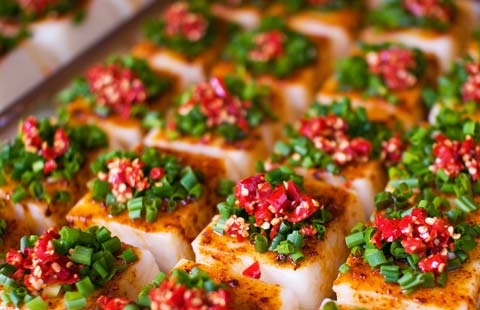
China's top 10 foodie cities |
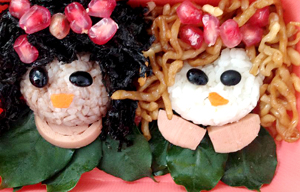
Cute boxed meals |
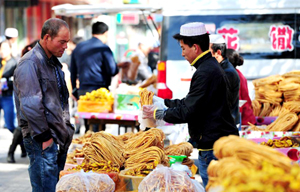
Muslims greet annual festival of Eid al-Adha in Yinchuan |
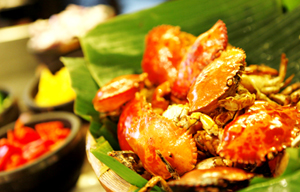
Cafe Noir hosts Singapore food festival |
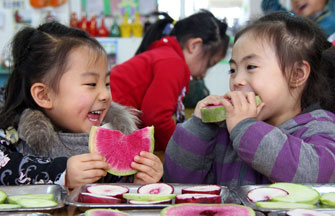
Biting the spring |
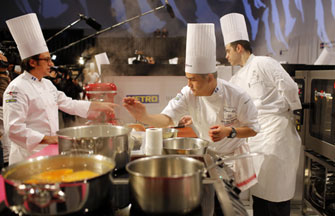
Bocuse d'Or Final gastronomic competition in France |
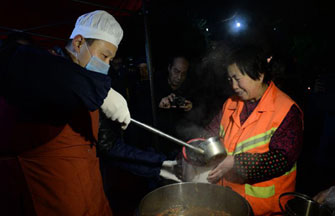
Temples in Xi'an distribute free Laba porridge |

Ice house restaurant opens to public in Shenyang |